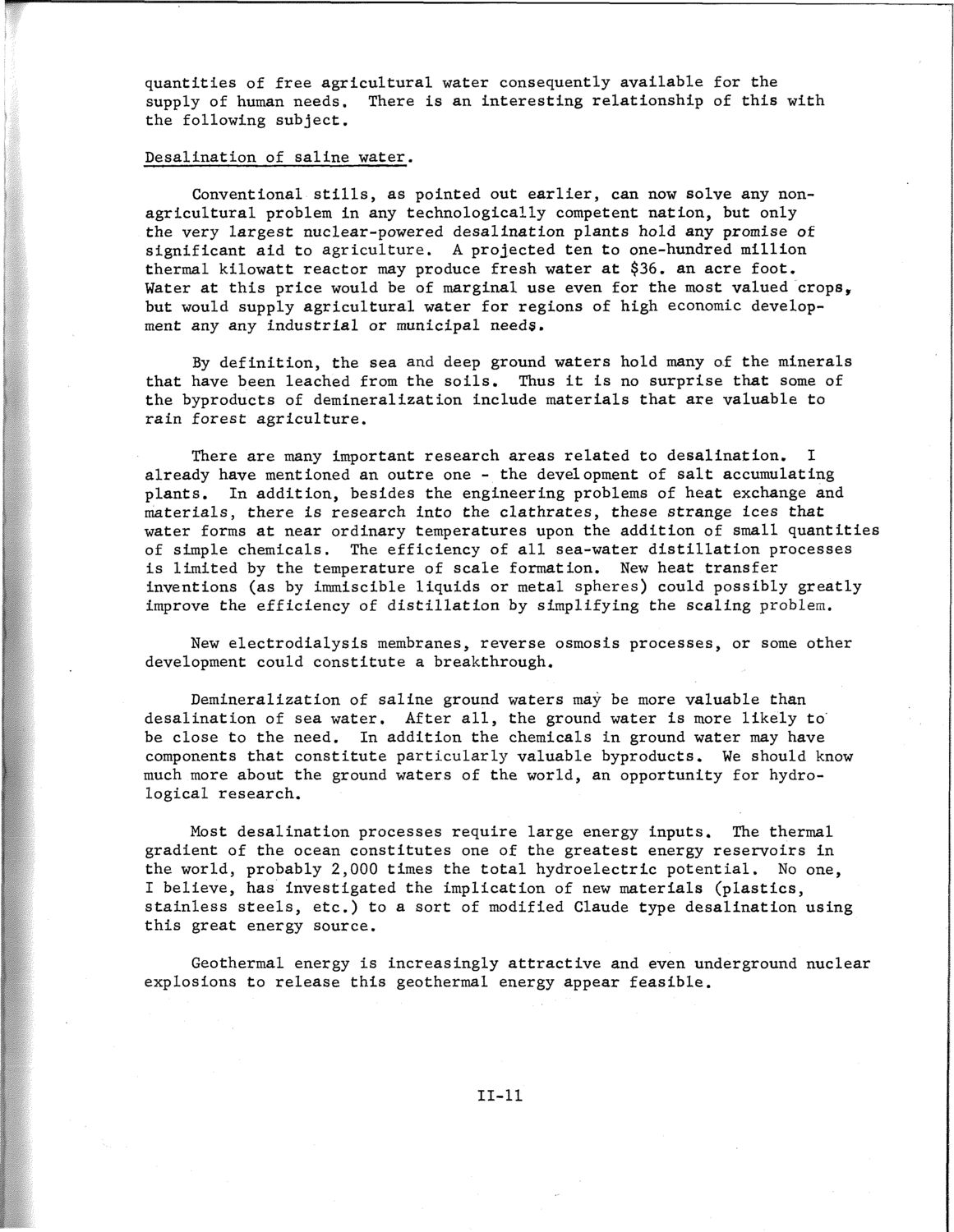| |
| |
Caption: SWE - Proceedings of the First International Conference of Women Engineers and Scientists
This is a reduced-resolution page image for fast online browsing.

EXTRACTED TEXT FROM PAGE:
quantities of free agricultural water consequently available for the supply of human needs. There is an interesting relationship of this with the following subject. Desalination of saline water. Conventional stills, as pointed out earlier, can now solve any nonagricultural problem in any technologically competent nation, but only the very largest nuclear-powered desalination plants hold any promise of significant aid to agriculture. A projected ten to one-hundred million thermal kilowatt reactor may produce fresh water at $36. an acre foot. Water at this price would be of marginal use even for the most valued crops, but would supply agricultural water for regions of high economic development any any industrial or municipal needs. By definition, the sea and deep ground waters hold many of the minerals that have been leached from the soils. Thus it is no surprise that some of the byproducts of demineralization include materials that are valuable to rain forest agriculture. There are many important research areas related to desalination. I already have mentioned an outre one - the development of salt accumulating plants. In addition, besides the engineering problems of heat exchange and materials, there is research into the clathrates, these strange ices that water forms at near ordinary temperatures upon the addition of small quantities of simple chemicals. The efficiency of all sea-water distillation processes is limited by the temperature of scale formation. New heat transfer inventions (as by immiscible liquids or metal spheres) could possibly greatly improve the efficiency of distillation by simplifying the scaling problem. New electrodialysis membranes, reverse osmosis processes, or some other development could constitute a breakthrough. Demineralization of saline ground waters may be more valuable than desalination of sea water. After all, the ground water is more likely to' be close to the need. In addition the chemicals in ground water may have components that constitute particularly valuable byproducts. We should know much more about the ground waters of the world, an opportunity for hydrological research. Most desalination processes require large energy inputs. The thermal gradient of the ocean constitutes one of the greatest energy reservoirs in the world, probably 2,000 times the total hydroelectric potential. No one, I believe, has investigated the implication of new materials (plastics, stainless steels, etc.) to a sort of modified Claude type desalination using this great energy source. Geothermal energy is increasingly attractive and even underground nuclear explosions to release this geothermal energy appear feasible. 11-11
| |